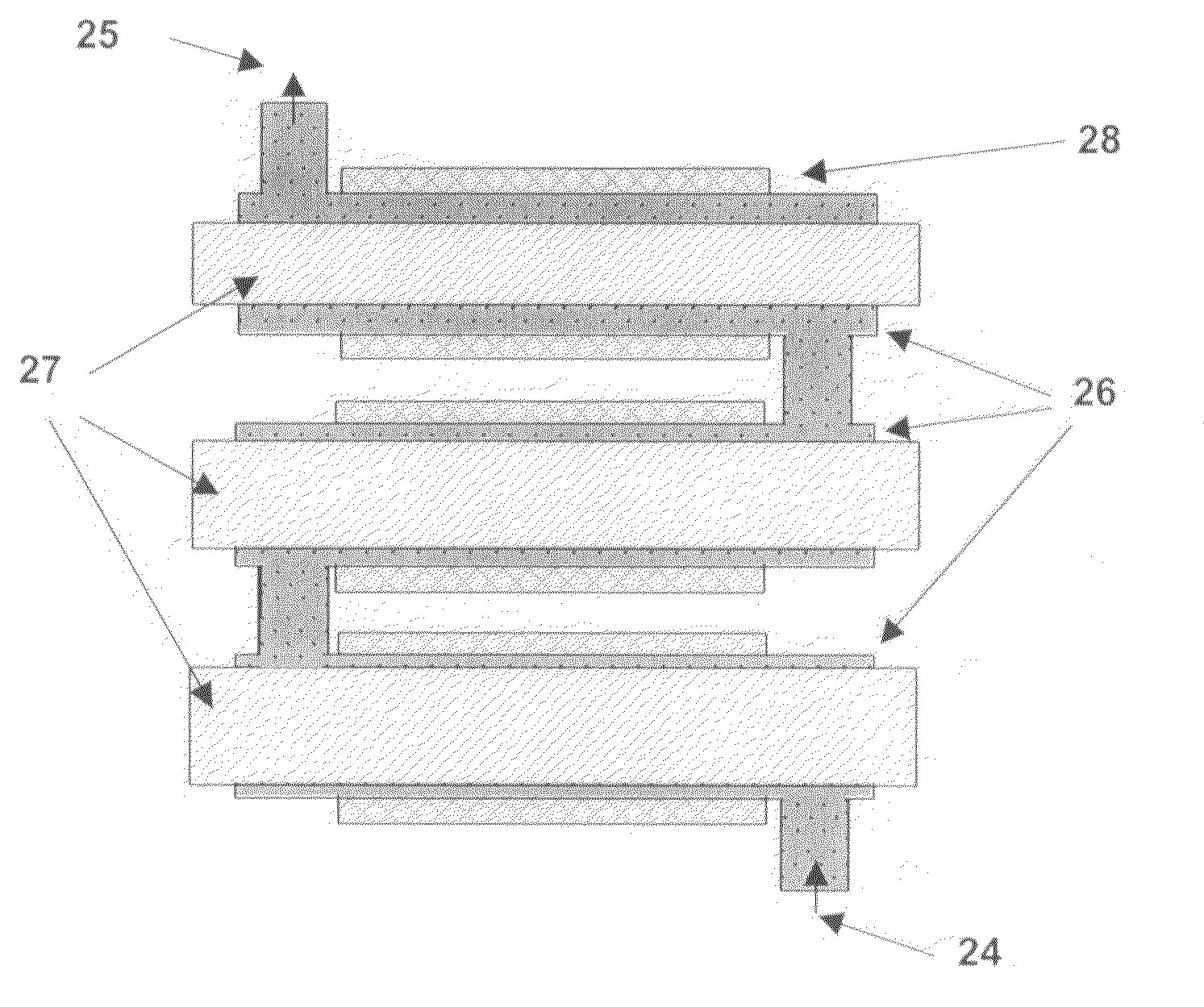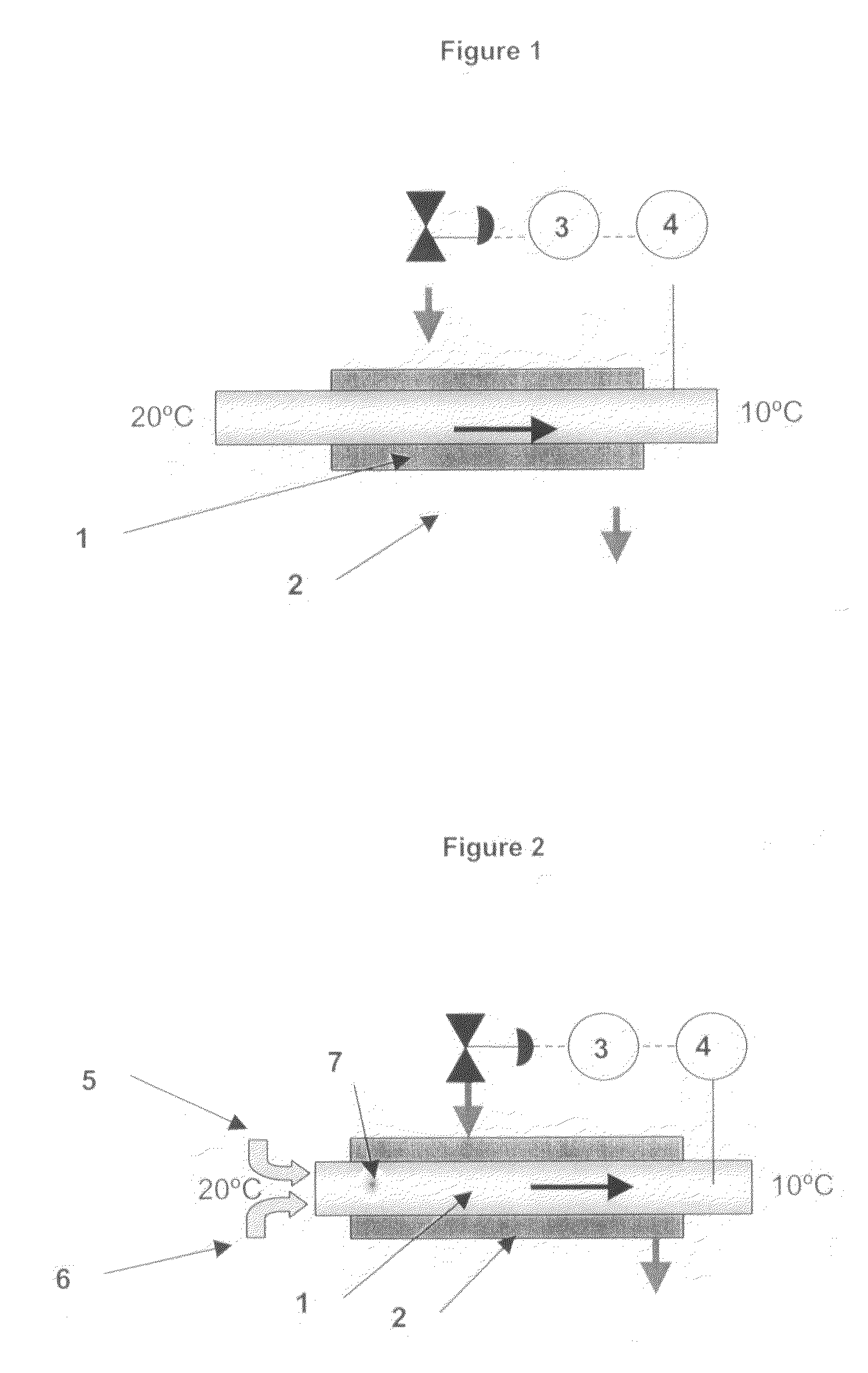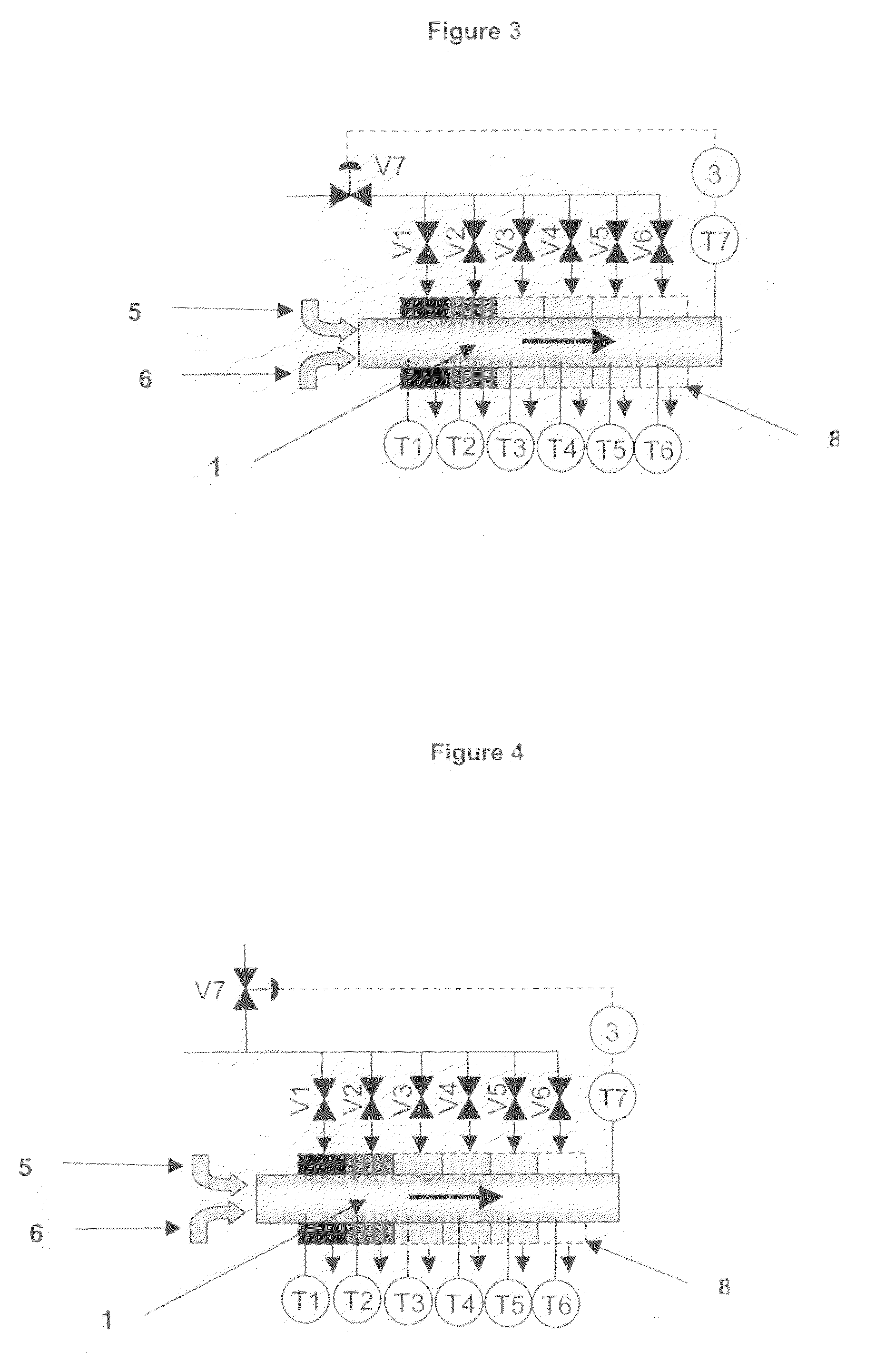Variable heat flux heat exchangers
a heat exchanger and variable heat flux technology, applied in the field of heat exchangers, can solve the problems of poor temperature control or oversized heat exchangers, the cooling power in one zone cannot be altered, and the reaction may progress too slowly and too quickly, and achieve the effect of uniform temperature profiles and ready-to-adap
- Summary
- Abstract
- Description
- Claims
- Application Information
AI Technical Summary
Benefits of technology
Problems solved by technology
Method used
Image
Examples
Embodiment Construction
[0034]In this document, the material which is required to be heated or cooled within the heat exchanger is referred to as the ‘process material’. The process material may be a liquid, an emulsion, a super critical fluid, a vapour, a gas, a paste, solid particulates or a combination of these.
[0035]The phrase ‘process conduit’ refers to the space (such as channel, pipe, gap between plates etc) through which the process material flows.
[0036]The phrase ‘process conduit area’ refers to the cross-sectional area of the aperture through which the process material flows at a given point.
[0037]In this document, the phrase ‘uniform flow’ is used to describe a velocity profile of the process material passing through the process conduit (in a laminar or turbulent fashion) which is substantially constant across the face of the process conduit. It also implies that there are no pockets or dead spaces within the process conduit. The term ‘substantially’ is used because some variation in velocity wi...
PUM
 Login to View More
Login to View More Abstract
Description
Claims
Application Information
 Login to View More
Login to View More - R&D
- Intellectual Property
- Life Sciences
- Materials
- Tech Scout
- Unparalleled Data Quality
- Higher Quality Content
- 60% Fewer Hallucinations
Browse by: Latest US Patents, China's latest patents, Technical Efficacy Thesaurus, Application Domain, Technology Topic, Popular Technical Reports.
© 2025 PatSnap. All rights reserved.Legal|Privacy policy|Modern Slavery Act Transparency Statement|Sitemap|About US| Contact US: help@patsnap.com



